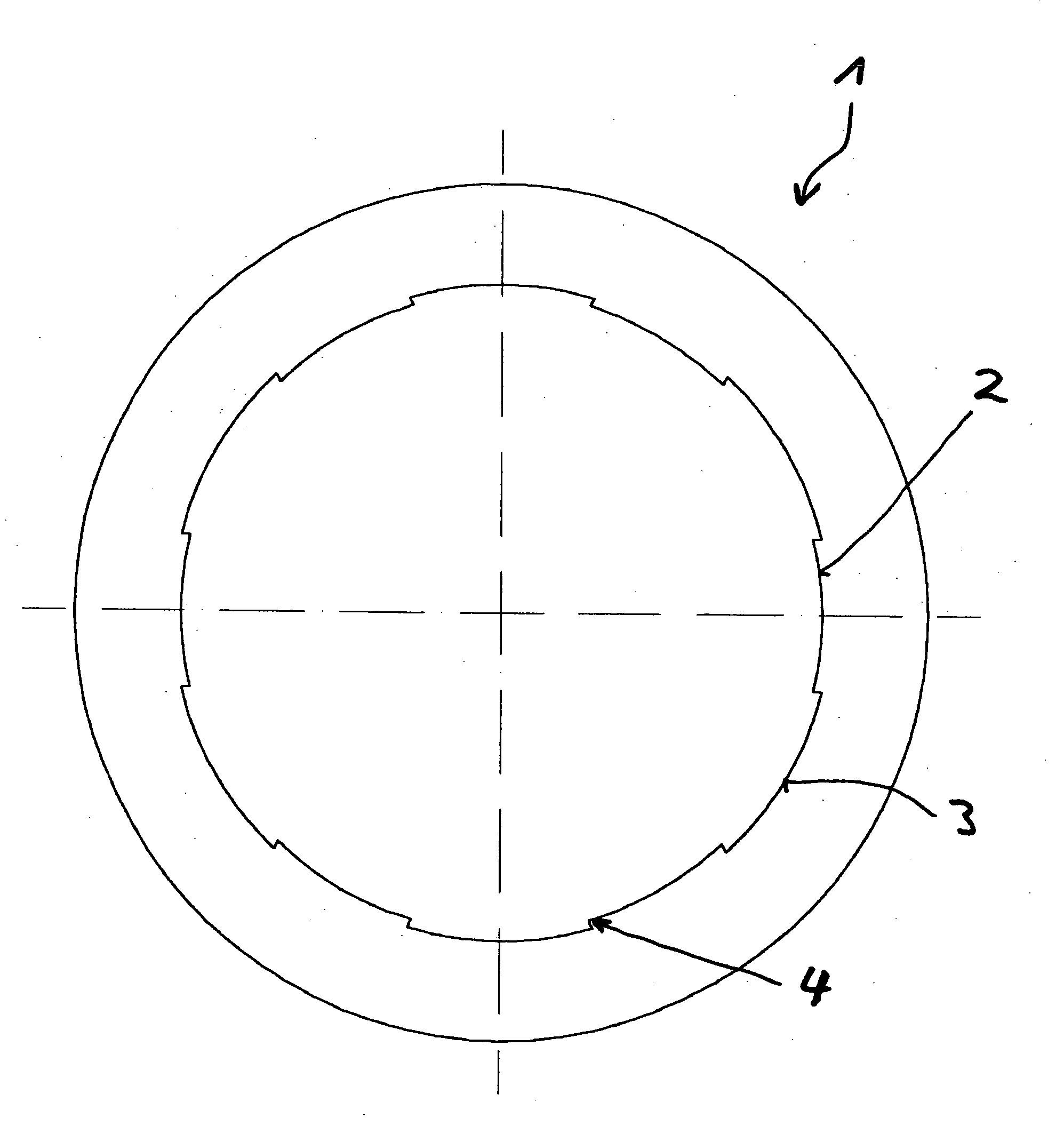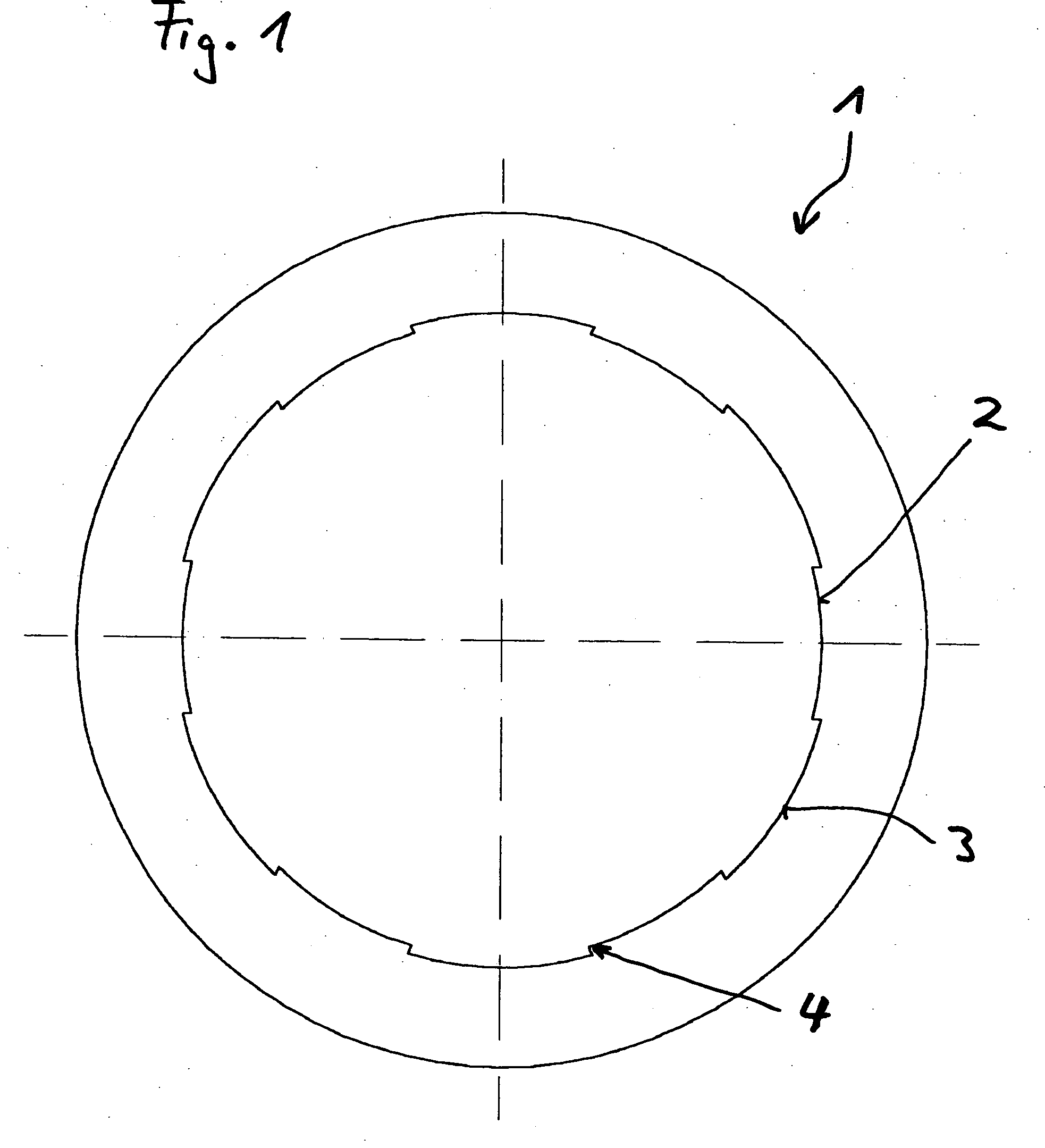Porous plain bearing with continuous variation of the borehole compression
a plain bearing and variation technology, applied in the direction of sliding contact bearings, mechanical equipment, rotary machine parts, etc., can solve the problems of 40° c, no lubricant depot in the form of grooves or nuts, and cannot guarantee the good functionality of standard plain porous bearings, etc., to achieve the effect of increasing friction, increasing wear, and increasing wear
- Summary
- Abstract
- Description
- Claims
- Application Information
AI Technical Summary
Benefits of technology
Problems solved by technology
Method used
Image
Examples
Embodiment Construction
[0032]FIG. 1 illustrates plain porous bearing 1 according to the current state of the technology, e.g. of DE 199 37 567, of DE 199 47 462 and 101 07 485, whereby a crossover exists between the highly compressed areas 2 and the slightly compressed areas 3. Step 4 is sufficiently disadvantageous that during operation, the oil film on the step 4 may be stripped off such that the supply of lubricant to the bearing gap can no longer be guaranteed.
[0033]FIG. 2 illustrates bearing bore 14 of the invention-related plain porous bearing 5 after sintering. The sinusoidal profile 6 of the bearing bore is inserted into the form process and exhibits a root circle 7 (smallest bearing bore diameter) in the lowest areas, and on the highest areas a tip circle 8 (largest bearing bore diameter). The difference between the root circle 7 and the tip circle 8 of the sinusoidal pattern indicates the suppression degree of the material during calibration. The diameter of the calibration mandrel will be adju...
PUM
| Property | Measurement | Unit |
|---|---|---|
| diameter | aaaaa | aaaaa |
| diameter | aaaaa | aaaaa |
| bore diameter | aaaaa | aaaaa |
Abstract
Description
Claims
Application Information
 Login to View More
Login to View More - R&D
- Intellectual Property
- Life Sciences
- Materials
- Tech Scout
- Unparalleled Data Quality
- Higher Quality Content
- 60% Fewer Hallucinations
Browse by: Latest US Patents, China's latest patents, Technical Efficacy Thesaurus, Application Domain, Technology Topic, Popular Technical Reports.
© 2025 PatSnap. All rights reserved.Legal|Privacy policy|Modern Slavery Act Transparency Statement|Sitemap|About US| Contact US: help@patsnap.com



